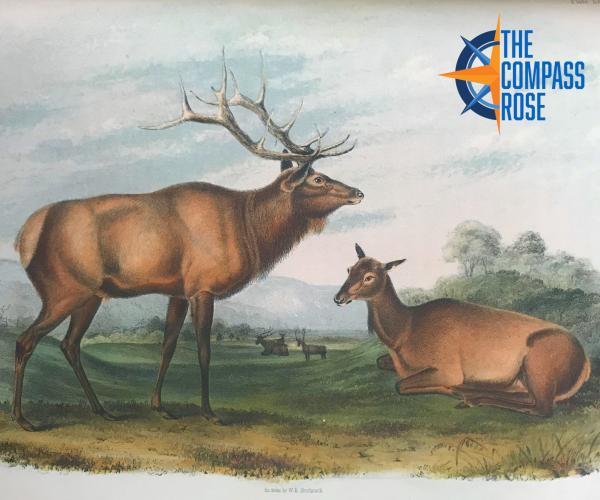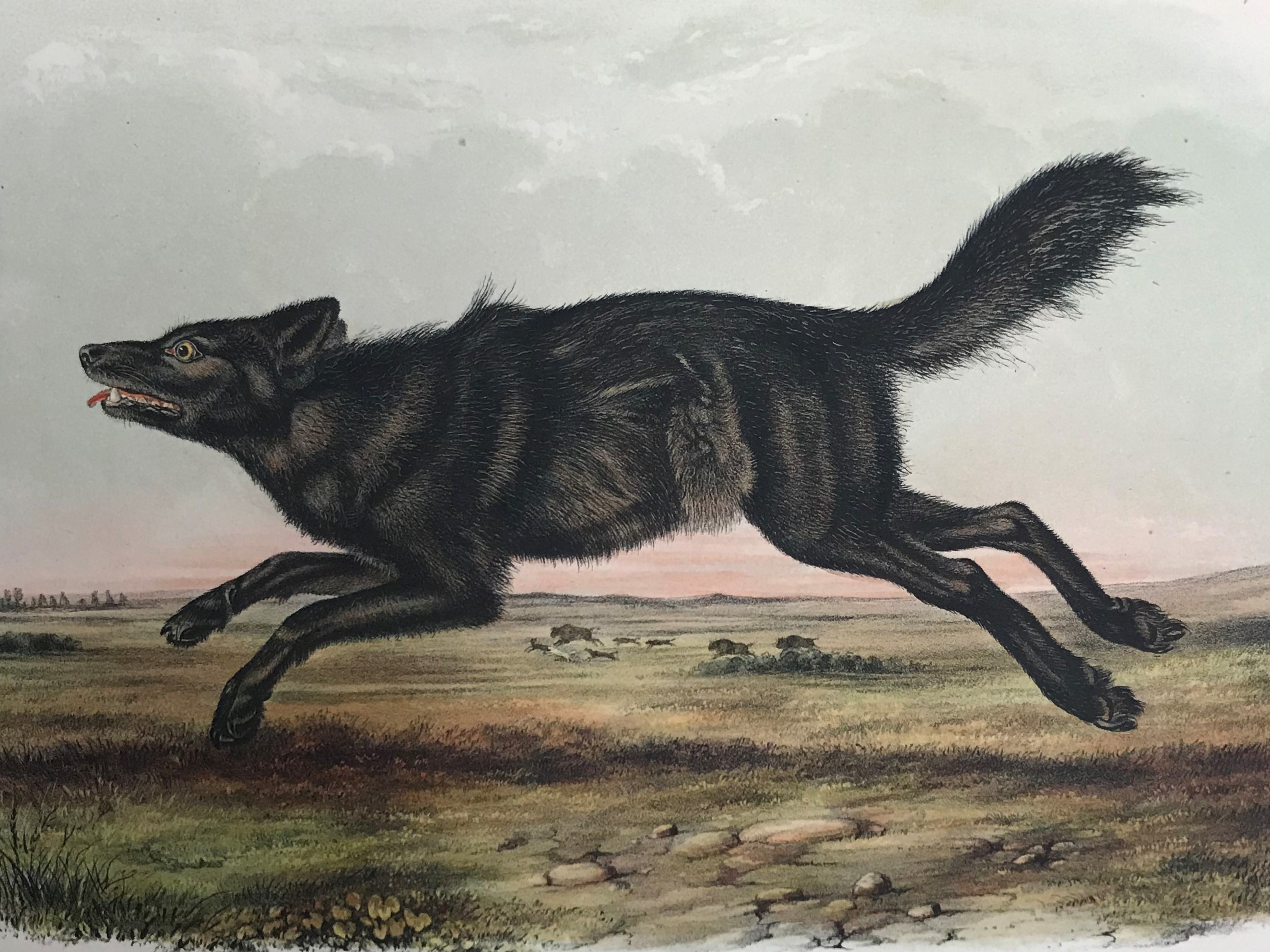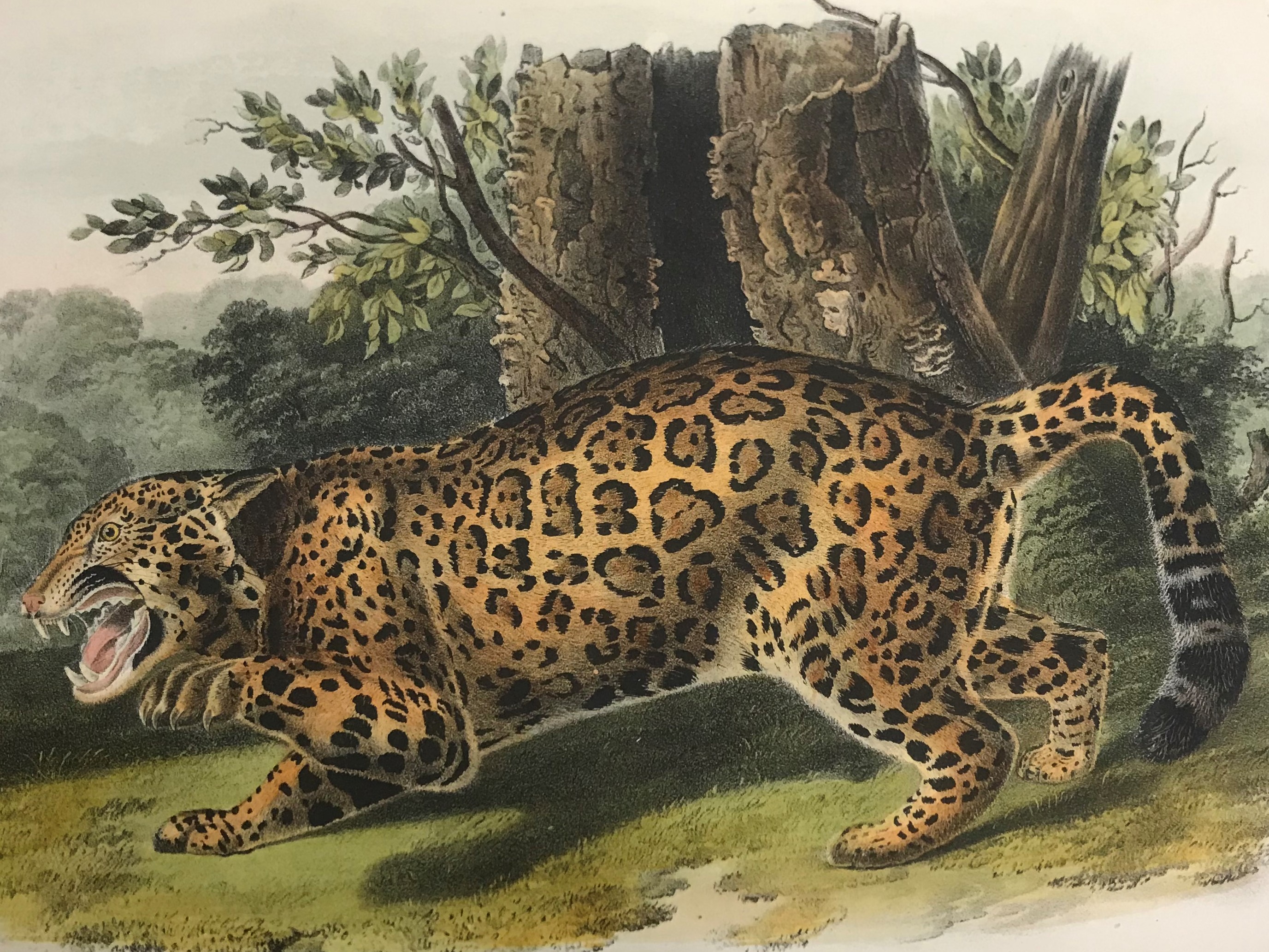
by Stephanie Luke


by Stephanie Luke
The purpose of The Compass Rose is to raise awareness of Special Collections' resources and to foster the use of these resources. The blog series also reports significant new programs, initiatives, and acquisitions of Special Collections.
We are proud to announce that Special Collections has recently acquired John James Audubon’s octavo edition of Viviparous Quadrupeds of North America. Audubon is perhaps best known for his Birds of America. This work, published between 1827 and 1838, features 435 hand-colored plates with life size renditions of birds like the flamingo, the Carolina parakeet, and the golden eagle. Audubon’s career, however, did not end with this monumental publication. In 1843, he traveled across the frontier of the United States so that he might encounter the many mammals that were native to North America. Audubon’s trip allowed him to produce much of the artwork for what would become Viviparous Quadrupeds of North America. With the assistance of his friend Rev. John Bachman, who wrote most of the naturalist text that accompanies the plates, and Audubon’s two sons, who assisted with the artwork, the work was published between 1843 and 1845.
Although less colorful than his avian subjects, the animals of Audubon’s Quadrupeds are subject to a more “colorful” history of scientific and cultural debate. In L’Histoire Naturelle, an expansive 36-volume work written between 1749 and 1804 by the French naturalist Georges-Louis Leclerc (most commonly referred to by his title “the Comte de Buffon”), Buffon noted what he saw as the differences between the animals of the Old World and the New. He wrote, “In this New World… there is some combination of elements and other physical causes, something that opposes the amplification of animated Nature: there are obstacles to the development, and perhaps the formation of large germs. Even those which… have acquired their complete form and expansion, shrink and diminish under a niggardly sky and an unprolific land.” Buffon’s assertion that the New World was inferior to the Old, and thus unable to produce the type of large and complex animals found in the Eastern hemisphere, was not well received by American Thomas Jefferson. Indeed, Jefferson objected so vehemently to Buffon’s claims that he composed a book on the subject, Notes on the State of Virginia, his only full-length work, which was first published in 1785. In it, he directly refuted Buffon’s arguments and included an extensive table comparing the weights of the animals in America to those in Europe. Jefferson’s work sought not only to legitimize the New World scientifically, but also to establish its cultural significance.

The Black Wolf, also called the Florida Black Wolf, was declared extinct in 1908.

The Jaguar has almost completely disappeared from the United States.
Although published more than fifty years after Notes on the State of Virginia, the Viviparous Quadrupeds of North America reinforced Jefferson’s assertions of the significance of North American animals by highlighting the complexity and diversity of the continent’s mammals. In the introduction, Bachman wrote that the goal of the work was “to place before the public a series of plates, which are not only scientifically correct, but interesting to all… [and] to describe those represented, so as not only to clear away the obscurity which had gathered over some species, but to make our readers acquainted with… all that we could ascertain of interest about them.” The art and its accompanying text gave readers a more thorough understanding of the varied wildlife of the continent. The Quadrupeds includes many species that neither Europeans nor Americans might have encountered in their lifetimes. The illustrations, however, allowed readers to experience a sense of familiarity with the subjects that is uncommon in naturalist works. While all the animals are beautifully rendered, some of the plates are missing the spark that defines Audubon’s Birds. Perhaps this is because only about half of the more than 150 plates were completed by Audubon, while his son, John Woodhouse Audubon, was responsible for the other half. While John Woodhouse Audubon was a capable artist in his own right, he seems to have lacked the ability of his father to imbue his subjects with life.
In his Birds, Audubon drew six species that have since been declared extinct. Several species in Quadrupeds have also been threatened since Audubon published the work. The Black American Wolf, also called the Florida Black Wolf, was declared extinct at the beginning of the 20th century. Some species like the Jaguar have almost completely disappeared from the United States. Animals like the Red Texas Wolf and the Polar Bear are currently threatened, while the American Buffalo was only saved due to conservation efforts in the 20th century.
Add new comment